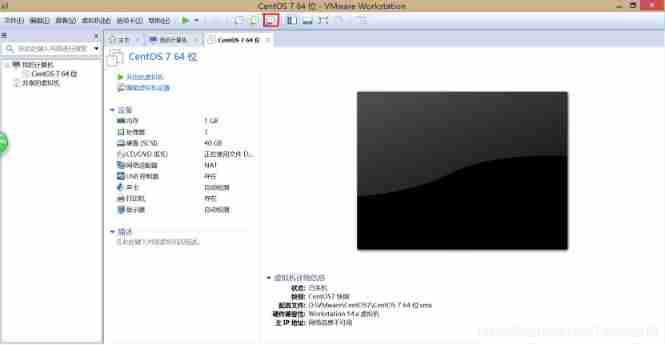当前位置:网站首页>如何创建线程
如何创建线程
2022-07-05 22:17:00 【爱敲代码的小高】
目录
一:认识线程
说到线程,我们就不得不提进程。较为官方的定义,进程是系统分配资源的最小单位,这个资源可以是cpu、内存等等。线程是系统调度的最小单位。并且同一个进程下的各个线程之间是可以相互共享资源的。
具体来说,举个例子,我们平时中午家里妈妈出去买菜,那么买菜就可以算是一个进程,紧接着妈妈让我们去卖鱼,她去买肉,那么这里的卖鱼和卖肉分别是买菜进程下的两个两个线程,那么相应的一些资源,比如用于买菜的钱,买鱼和买肉的时候都可以用。并且这样分头行动比和妈妈一起买完鱼再去买肉,相对的速度要快很对。
于此,我们发现,多线程可以提升效率。
二:如何构造线程
1:继承Thread类,重写run方法
代码如下
class MyThread extends Thread{
@Override
public void run() {
System.out.println("hello,Thread");
}
}
public class ThreadDemo1 {
public static void main(String[] args) {
Thread t =new MyThread();
t.start();
t.run();
}
}2:实现runnable接口,重写run方法
代码如下
class MyRunnable implements Runnable{
@Override
public void run() {
while (true){
System.out.println("hello,Thread");
try {
Thread.sleep(1000);
} catch (InterruptedException e) {
e.printStackTrace();
}
}
}
}
public class ThreadDemo3 {
public static void main(String[] args) {
Thread t =new Thread(new MyRunnable());
t.start();
}
}
3:使用lambda表达式创建runnable子类对象
代码如下
public class ThreadDemo6 {
public static void main(String[] args) {
Thread t =new Thread(() ->{
while (true){
System.out.println("hello thread");
try {
Thread.sleep(1000);
} catch (InterruptedException e) {
e.printStackTrace();
}
}
});
t.start();
}
}
此外,也可以用匿名内部类的方式创建Thread和Runnable对象
4匿名内部类方法
1:Thread
public class ThreadDemo4 {
public static void main(String[] args) {
//这个语法就是匿名内部类
//相当于创建了一个匿名的类,这个类继承了Thread
//此处咱们new的实例,其实就是new了这个新的子类的实例
Thread t =new Thread(){
@Override
public void run() {
while(true){
System.out.println("hello,Thread");
try {
Thread.sleep(1000);
} catch (InterruptedException e) {
e.printStackTrace();
}
}
}
};
t.start();
}
}
2:Runnable
public class ThreadDemo5 {
public static void main(String[] args) {
Thread t =new Thread(new Runnable() {
@Override
public void run() {
while (true){
System.out.println("hello thread"); try {
Thread.sleep(1000);
} catch (InterruptedException e) {
e.printStackTrace();
}
}
}
});
t.start();
}
}以上就是线程进程的一些区别和联系以及创建线程的几种方法,算是有五种吧。
边栏推荐
- Leetcode simple question ring and rod
- Granularity of blocking of concurrency control
- 笔记本电脑蓝牙怎么用来连接耳机
- Pl/sql basic case
- Common interview questions of redis factory
- Wonderful review of the digital Expo | highlight scientific research strength, and Zhongchuang computing power won the digital influence enterprise award
- What about data leakage? " Watson k'7 moves to eliminate security threats
- Practice: fabric user certificate revocation operation process
- Leetcode simple question: the minimum cost of buying candy at a discount
- Ad637 notes d'utilisation
猜你喜欢

Win11缺少dll文件怎么办?Win11系统找不到dll文件修复方法

多家呼吸机巨头产品近期被一级召回 呼吸机市场仍在增量竞争

Shell script, awk uses if, for process control

Create a virtual machine on VMware (system not installed)

数据泄露怎么办?'华生·K'7招消灭安全威胁

90后测试员:“入职阿里,这一次,我决定不在跳槽了”

Overview of database recovery

Nacos installation and service registration

Recovery technology with checkpoints

The Blue Bridge Cup web application development simulation competition is open for the first time! Contestants fast forward!
随机推荐
Unique occurrence times of leetcode simple questions
Interprocess communication in the "Chris Richardson microservice series" microservice architecture
Metaverse Ape上线倒计时,推荐活动火爆进行
从零开始实现lmax-Disruptor队列(四)多线程生产者MultiProducerSequencer原理解析
Sentinel production environment practice (I)
FBO and RBO disappeared in webgpu
CA certificate trampled pit
Form artifact
Implementing Lmax disruptor queue from scratch (IV) principle analysis of multithreaded producer multiproducersequencer
笔记本电脑蓝牙怎么用来连接耳机
Shell script, awk condition judgment and logic comparison &||
Business learning of mall commodity module
等到产业互联网时代真正发展成熟,我们将会看待一系列的新产业巨头的出现
HDU 4391 paint the wall segment tree (water
Sub total of Pico development
Livelocks and deadlocks of concurrency control
Performance testing of software testing
Leetcode simple question: find the nearest point with the same X or Y coordinate
Meituan dynamic thread pool practice ideas, open source
Oracle hint understanding